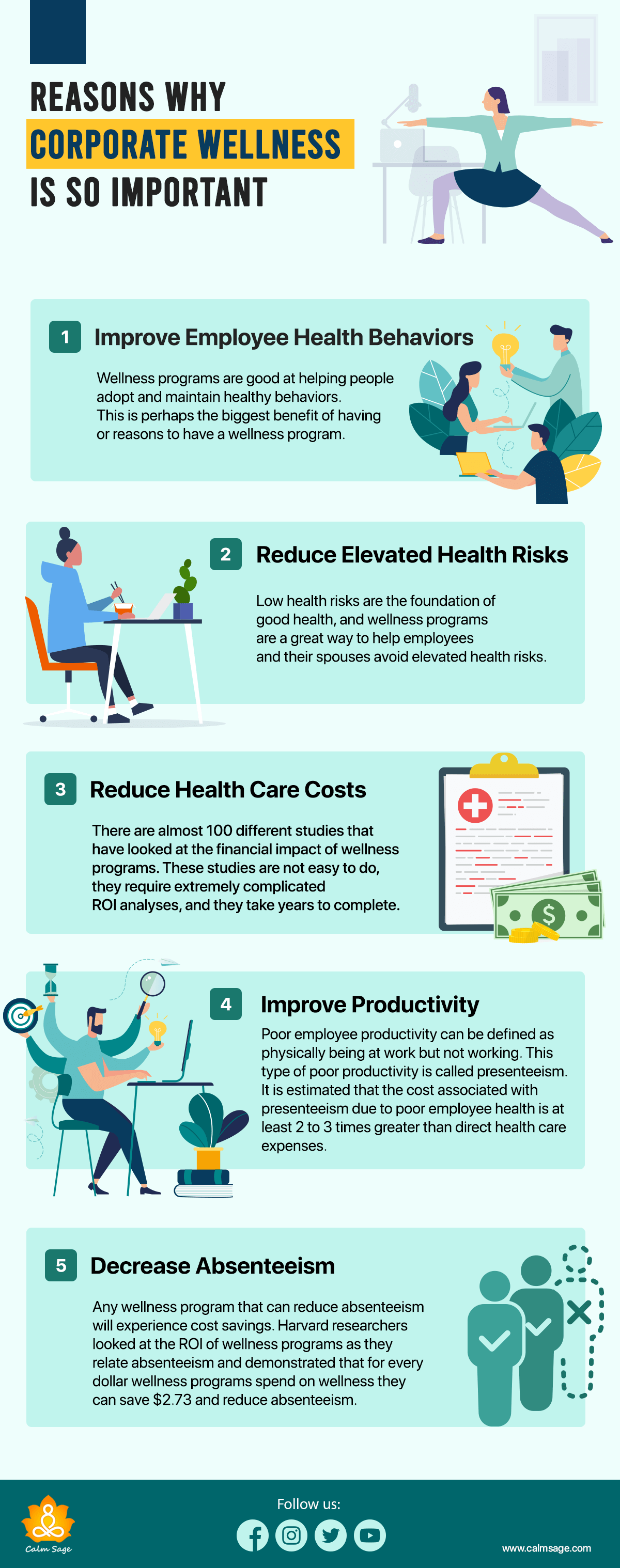Corporate Wellness for Beginners
Corporate Wellness for Beginners
Blog Article
Unknown Facts About Corporate Wellness
Table of ContentsThe 5-Minute Rule for Corporate WellnessThe Main Principles Of Corporate Wellness The Definitive Guide to Corporate WellnessThe Buzz on Corporate WellnessThe smart Trick of Corporate Wellness That Nobody is Talking About

Group Challenges: Wellness 360 provides interesting team-based obstacles that encourage staff members. Data-Driven Choices: substantial coverage and data evaluation devices better educate your options regarding staff member health.

The Best Guide To Corporate Wellness
Get in touch with the company to learn concerning plans and rates choices. 4.3/ 5 In today's dynamic work atmosphere, focusing on staff member wellness is no more a luxury; it's a requirement. These platforms use attributes that attend to physical and mental wellness requirements, from personalized training and gamified obstacles to data-driven understandings and seamless advantage navigation.
Below's why focusing on staff member wellbeing is wise company: A supportive office that values staff member well-being fosters commitment and lowers turnover. Staff members are more most likely to remain with a company that sustains their wellness and individual lives.
Guarantee employees have accessibility to mental health experts via Worker Help Programs (EAPs). Host sessions on mindfulness, reflection, or stress-reduction strategies. Foster open conversations about mental health and wellness and train managers to identify signs of fatigue or distress. Employees grow in atmospheres where they really feel connected, supported, and part of a neighborhood.
Arrange joint exercises, resorts, or social occasions to enhance relationships. Pair workers with advisors to cultivate specialist development and a sense of belonging. Motivate feedback and create areas for significant discussions in between workers and leadership.: Financial tension can weaken both psychological and physical wellness, causing reduced focus and efficiency at the workplace.
Corporate Wellness - Truths
Urge workers to establish borders, such as not reacting to emails outside job hours. Promote a culture where requiring time for personal dedications webpage is valued. Restricted flexibility in job plans, such as calling for on-site work, can add unnecessary anxiety and limit staff members' ability to handle individual obligations. Check out crossbreed or look at more info remote job options to sustain varied needs.
Mentorship programs sustain employee development and boost the staff member experience. Leaders should advertise inclusivity by modeling empathy and focusing on worker health and wellbeing.
Contrast study results over time to track changes in satisfaction and engagement. Use insights from your metrics to refine your well-being efforts: If absence remains high, take into consideration presenting even more targeted health and wellness programs or revisiting workload administration.
Investing in worker wellness benefits both the workforce and the company. By creating an encouraging atmosphere, companies can motivate workers to be more involved, resilient, and motivated.
The 5-Minute Rule for Corporate Wellness
Today, several companies do not see or can not gauge the benefits of their current investments in worker wellness. They also don't assign sources in one of the most effective wayoften, the issue is not just how much is being invested but the kind of financial investment being made. Instead of entirely addressing the bad wellness of individual employees, establishing a healthy labor force suggests taking a profile technique: attending to disease and promoting healthiness, supporting individuals, and developing much healthier groups, tasks, and business settings.
The choice to demand a healthy work environment is one every employee and capitalist can make. Health is "even more than the absence of condition or infirmity," as the World Wellness Company (THAT) puts it. Modern principles of wellness consist of psychological, physical, spiritual, and social function. Today, more than 3.5 billion functioning adults each invest about 90,000 hours (or about 45 years) of their lives at job.
A number of fads are difficult to ignore: even more people functioning than ever, an aging populace living and working much longer, and rising levels of burnout. The present state of the workforce, coupled with these trends, demands a rethink of employee health and wellness to stay clear of a possible dilemma for wellness and organization. A healthy and balanced workforce is not simply a matter of business and social obligation; it is a tactical requirement and a significant business opportunity.
Corporate Wellness Can Be Fun For Everyone

This rundown describes why buying workforce health and wellness can improve organizational performance, improve worker outcomes, and use a significant return on financial investment. The world is changing. Corporate Wellness. Individuals are living and functioning much longer, and their roles are advancing because of changes in population analysis, developments in technology, globalization, and geopolitical and environment risks
Report this page